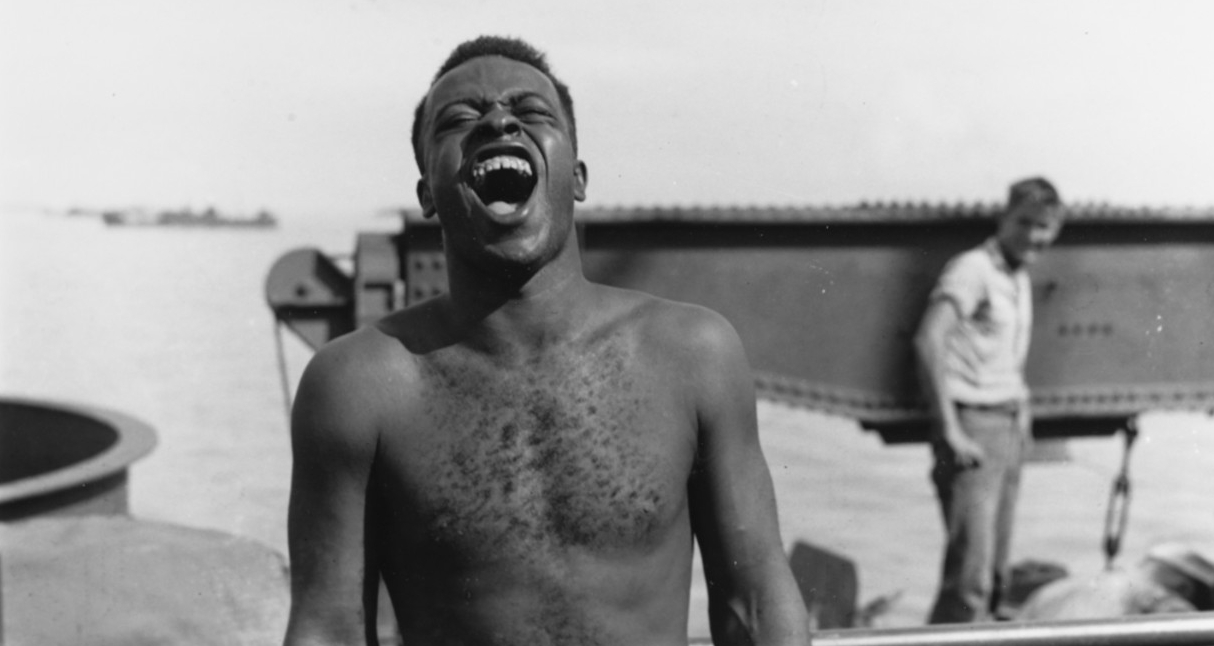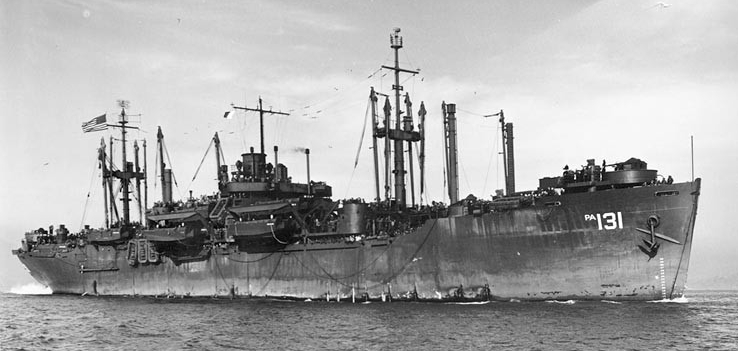Bandera (APA-131)
1944-1946
A county in south central Texas organized in 1856. The city that served as the county’s seat is also named Bandera.
(APA-131: displacement 14,837; length 455'0"; beam 62'0"; draft 24'0"; speed 17.7 knots; complement 536; troops 1,561; armament 1 5-inch, 12 40 millimeter, 10 20 millimeter; class Haskell; type VC2-S-AP5)
Bandera (APA-131) was laid down under a Maritime Commission contract (M.C.V. Hull 47) on 23 July 1944 at Wilmington, Calif., by the California Shipbuilding Co.; launched on 6 October 194A; sponsored by Mrs. Elmer P. Abernethy, wife of Capt. Elmer P. Abernethy, recipient of the Navy Cross for his heroism in command of the oiler Pecos (AO-6) in 1942; acquired by the Navy on 5 December 1944; and commissioned on 6 December 1944, Capt. George C. Miller in command.
Following shakedown off San Pedro, Calif., and amphibious training at San Diego, Calif., the attack transport underwent post shakedown availability at Terminal Island, Calif. On 28 January 1945, Bandera sailed for San Francisco, Calif., to load cargo and embark passengers for passage to the Territory of Hawaii. She stood out to sea on 1 February and reached Honolulu exactly a week later. After shifting to Pearl Harbor the next day, the 9th, she began a busy schedule of shuttling troops and cargo between Pearl Harbor and the Marshall, Caroline, and Mariana Islands. She carried reinforcement troops and supplies on her outbound journeys and returned wounded men during her voyages back to Pearl.
Although Bandera participated in tactical and amphibious training off Maui from 3 April to 31 May 1945, she never participated in any landing operations. She left the Southwest Pacific on 19 June carrying U.S. Army troops whom she disembarked at San Francisco before continuing on to Everett, Wash., for upkeep. At the end of June, she embarked troops and cargo and began another voyage to Pearl Harbor where she resumed ferry service between the islands. Bandera was at Ulithi in the Caroline Islands when she received news of the Japanese acceptance of the terms of the Potsdam Declaration and the agreement to surrender.
Bandera steamed to Jinsen [Inchon], Korea, in October 1945 before being assigned to the Magic Carpet fleet that returned veterans to the United States for discharge. She made one trip to Shanghai, China, in January and February 1946.
Bandera arrived in San Francisco on 15 February 1946, disembarked her contingent of returning troops, and then sailed for Norfolk, Va., where she arrived on 11 March for inactivation preparations. The transport was decommissioned on 7 May 1946 and returned to the Maritime Commission, being placed in the James River Reserve Fleet off Lee Hall, Va., at 11:35 a.m. on 14 May 1946; shortly thereafter, on 21 May 1946, she was stricken from the Navy Register. Records indicate her proximity to the C1-B cargo ship Cape Neddick, a period alongside the Liberty ship (EC2-S-C1) Ephraim W. Baughman, then the C1-S-D1-type vessel Willis A. Slater.
Withdrawn from the Reserve Fleet at noon on 15 September 1954, Bandera was transferred to A. H. Bull & Co., Inc., under a general agency agreement under the Fiscal Year 1955 Repair Program, and returned at 2:10 p.m. on 10 November 1954. She was advertised for sale on 14 December 1973, with bids opening on 16 January 1974. Consolidated Steel Corp. acquired the former attack transport on 23 January 1974, taking delivery at 9:00 a.m. on 23 January 1974.
Mary P. Walker
Updated, Robert J. Cressman
23 May 2024




